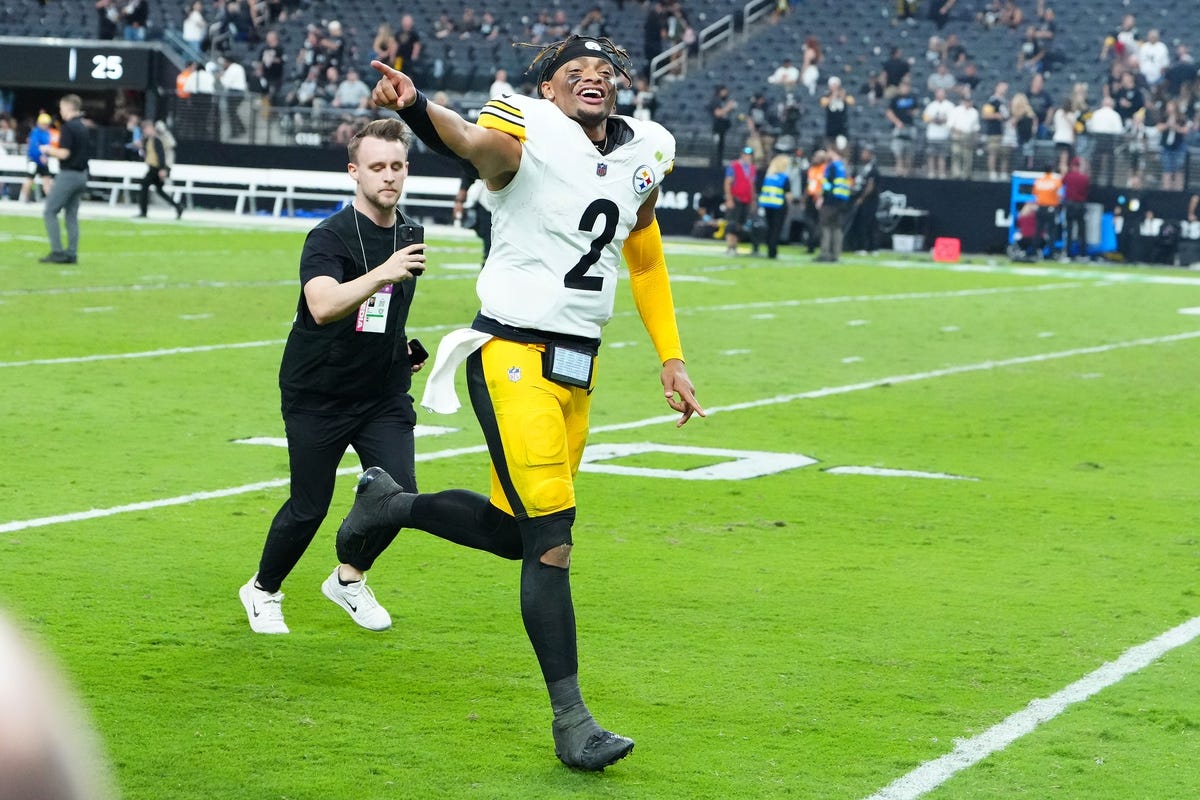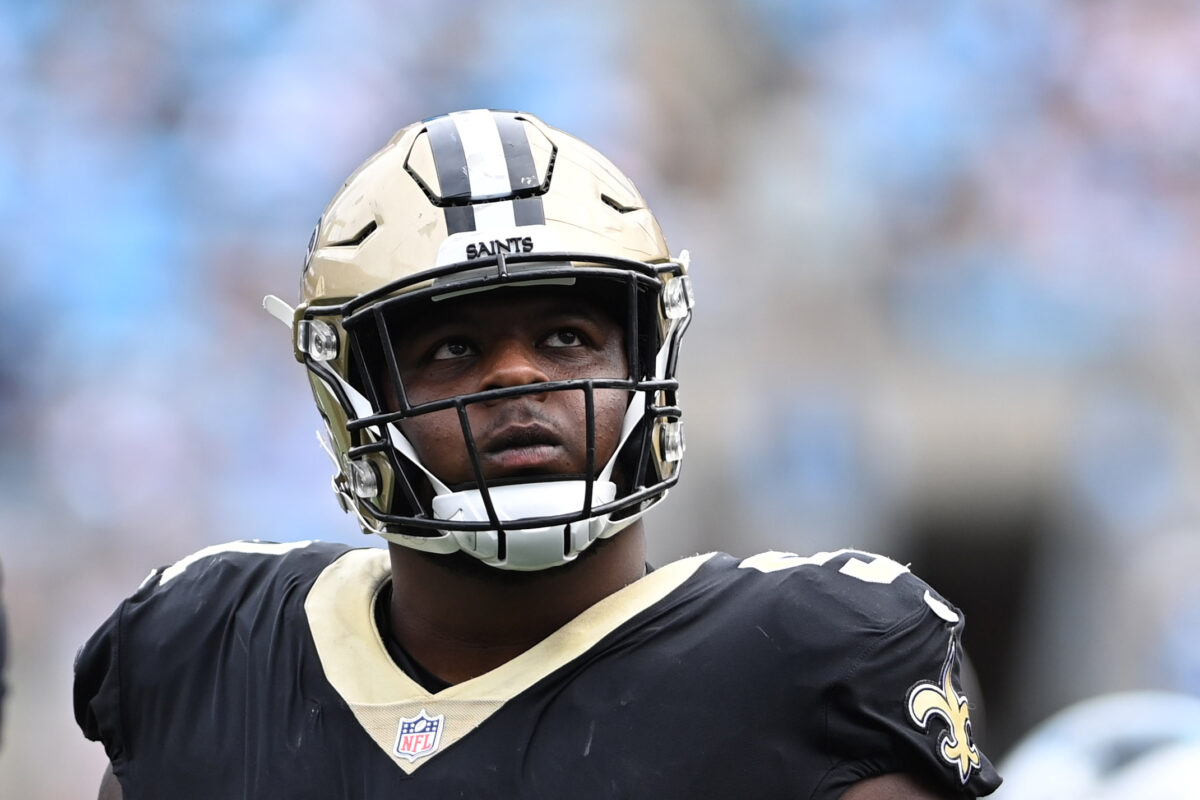The New Orleans Saints have the resources to trade for Seattle Seahawks QB Russell Wilson, or at least enough to make a compelling offer.
[sendtonews_embed video_id=”vVPip5YAvT-1182610-7498″]
Seattle Seahawks quarterback Russell Wilson is continuing to pop up in trade speculation. NFL Network’s Michael Silver reported in February that teams who had called Seattle believed it would take three first-round draft picks to get the ball rolling — and talks have since continued, per ESPN’s Dianna Russini, so that’s a price someone might be willing to pay.
Could one interested buyer be the New Orleans Saints?
Maybe. They don’t have a clear heir to Drew Brees, who is expected to announce his retirement after taking a $24 million pay cut to help the team’s salary cap situation. Taysom Hill didn’t look like a long-term fix in his handful of starts. Jameis Winston has a stronger resume but isn’t under contract. Wilson would provide the stability New Orleans needs at quarterback.
But acquiring him is tricky. His 2021 cap hit isn’t a problem at just $19 million for any team he’s traded to, all of which is made up in a base salary that can be restructured for even more flexibility (NewOrleans.Football’s Nick Underhill gets into the nuts and bolts of his contract here). The Saints are in a fluid situation and there’s inconsistent data out there, but estimates put them at between $59 million and $64 million above the projected cap — a nice improvement over the $101 million or so they started out in the red. They have more work to do to get cap compliant before free agency, but the finances wouldn’t be much of a hurdle if they want to go get Wilson. And they have every incentive to do so.
But what could that cost? Here’s a suggestion.
The offer starts with three first round picks: No. 28 this year, and the Saints’ top selections in 2022 and 2023. That seems like a lot, but their last three first rounders were Marcus Davenport and Cesar Ruiz. Would you trade those players for Wilson? Yeah, though so.
That’s not all it will take, though. The Saints aren’t the only team who could be in on Wilson, even if others aren’t on his approved list. Another team might make a better offer and Wilson could talk himself into joining them. So the Saints need to do more to sweeten the deal.
Simply adding more picks isn’t viable; per NFL rules, teams can only swap picks up to 2023 right now, with selections in 2024 becoming available after this year’s draft. Piling on second-round selections is a tough sell because you’ll need those picks to make up for what you’ve lost in the first round.
So let’s look at the roster and consider packaging veteran players in a deal. Now, this isn’t an opportunity to get rid of unpopular players like Davenport or three-time Pro Bowl guard Andrus Peat. There would be plenty of debate among fans about whether certain players are off-limits in trade talks — players among the best of their peers like Alvin Kamara, Ryan Ramczyk, and Marshon Lattimore.
Trading Michael Thomas has been a hot topic this offseason, but the Seahawks probably wouldn’t be interested in him. They already have some horses at receiver in DK Metcalf and Tyler Lockett. Cameron Jordan would add a lot of juice to their defensive line, as would David Onyemata, but the losses New Orleans is taking up front in free agency might make them wary of moving either player.
So let’s look back at the first trio. Kamara impressed Seahawks coach Pete Carroll in 2019, leaving Carroll gushing about Kamara after he dropped 161 scrimmage yards and a pair of touchdowns on the Seattle defense. It’s easy to see Carroll falling in love with Kamara, much like he was once infatuated by Jimmy Graham’s talents. They haven’t gotten anything out of Rashaad Penny, a recent first-round draft pick, and Chris Carson has a tenuous hold on the top running back spot.
Ramczyk is a great right tackle, but the Seahawks have a solid set of bookends in Duane Brown on the left side and Brandon Shell on the other. And he’s probably as untouchable as it gets for the Saints given the premium paid to tackles. With Terron Armstead entering the final year of his contract, it’s vital the Saints establish some consistency at one tackle spot or the other (ideally by signing both of them to extensions).
That leaves us with Lattimore, a Pro Bowl cornerback. Like Ramczyk, he’s a year away from free agency on his fifth-year option. Moving him would free up almost $10 million against the cap. Unlike Ramczyk, he’s been more inconsistent throughout his career, and paying him close to $20 million (as top corners earn these days) is dicey. The Seahawks still haven’t replaced Richard Sherman as their alpha cornerback, and maybe Carroll can be swayed into believing he can coach Lattimore up to his potential.
Ironically, three-time Pro Bowl guard Peat would be a good fit in Seattle. The Seahawks don’t have a real left guard they can trust, with Mike Iupati retiring and Jordan Simmons underwhelming there. Could he be packaged with Lattimore and several draft picks to get a deal done? Maybe so.
Here’s my proposal. The Saints get Wilson, in return trading:
- Cornerback Marshon Lattimore
- Three-time Pro Bowl guard Andrus Peat
- 2021 first round pick (No. 28 overall)
- 2022 first round pick (TBD)
- 2023 second round pick, conditional (becomes a first rounder if Wilson either leads the league in passing yards OR wins a Super Bowl)
The Seahawks might object to that conditional pick, but that’s where Wilson’s leverage comes into play. The no-trade clause he can choose to waive gives him rare input. He can step in and demand the Seahawks accept it. Other teams could still offer better deals, but he can force his hand here if he chooses. In the interest of still getting a nice return, Seattle might concede.
There are other tweaks available. Seattle could put a laser focus on Kamara. Maybe the Saints try and sell Carroll on Taysom Hill as the paragon of his preferred ground-and-pound style of play. Maybe he puts his foot down and demands three first round picks, no strings attached.
Ultimately all we can do is guess about how negotiations might play out, if they happen at all. But the Saints have enough ammo to get a deal done if they so choose. If a franchise quarterback like Wilson is available to take the wheel from Brees, they owe it to themselves and their fans to give it their best shot.





